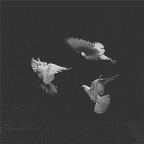A recap…
For the past few weeks the fabrication group has continued on exploring the use of latex and different ways it could be implemented into the design of the pavilion.
If we recount all the way back to the start May, the fabrication folks put together a jig that allowed us to repeatedly pull a material in a bi-axial vectors, pulling whatever sheet of material we wanted in vectors perpendicular to each other. With the help of workshop staff, the design of the device and how it works is similar to how an umbrella operates. So with the help of a threaded rod, we are able to push these four wooden arms up and outward to pull the material four different ways.
This process held us pull material in a uniform repeated problems but also faced its own problems. By twisting a nut to move these arms up, it was a really tedious and lengthy task. The twisting of the nut also lead to a breakage with the hinges we used for the arms since they were just hinges that were sourced from spares around the workshop and even cut to size. These hinges were replaced with new ones and new wooden arms. The fabrication group had some success with the new parts but still went through the slowed process of using the threaded rod and nut to move the arms to pull the fabric. This process was actually helpful when there was high tension in the material we were pulling since it would stretch in smaller, manageable increments. Ultimately, this slight improvement also ended up falling apart as well
The amount of energy built up in the latex ended up ripping the screw holding one of the hinges that was attached to the arm and the slider plate. A way this could have been avoided was by using longer screws since we used short pan head screws that allowed it to rip through the wood grain. We did put the arm back together after this but we noticed that the jig would not operate the same. The plate on one side of the jig did not move as freely as the other plates and required a tug for displacement to occur. We soon realised that one of the other new hinges have also broken. Regardless of breakages and the setback they have brought on the fabrication team, the show must go on.
The Jig ended up being operated in a more manual method but was still useful. We started cutting patterns out with the laser cutter using a number of different sheet materials (plywood, acrylic, polypropylene) that were more rigid than latex.
these panels were attached on to the latex. We tried different adhesives to apply the pattern but the group found that super glue provided the strongest bond between the latex and rigid, plastic sheet pattern.
when the tension is slowly released, the panels gets bent into shape from the relieved elongation of the latex. the difference in lengths of the two materials causes the non-stretchy material to warp.
We repeated this method over and over again as the design of the pavilion changed, one of the challenges we faced throughout the testing of different material, patterns and force applied, was getting really consistent, and identical results. Even though we repeated these tests, we still weren’t getting the perfect results we were after, there was still some form of unpredictability and inconsistency with the results. Some factors that may have caused this could be through human error. Since the jig slowly fell apart, piece by piece, we had to take testing into our own hands, with the use of what wasn't broken with the jig (+ shaped track and sliding plates). We did measure the distance we pulled from each side but little things such as the release of tension on the material was down by hand, the way the material was attached to the jig caused a few tears. Another reason for the inconsistent results was due to material composition, especially with ply wood. We noticed that the grain of the plywood affected the bending of the panel.
Another aspect our group explored was the way in which we cut the latex. What originally seemed like a good option was to use the Zünd cutter, a CNC modular cutting machine which was equip-able with different tool bits such as a milling bit or even a razor blade. This machine would have worked well with other sheet materials but would not be compatible with cutting latex, the elasticity, stretch and stickiness wouldn’t allow for the razor to simply cut through it. we had to use a manual method of hand and scissors.
As the group soldier on with pattern testing and the overall design of the pavilion was going through changes, one of the elements of the design that remained the same throughout the changes were the ribbing structure elements of the pavilion. this was originally designed with finger joints holding the different pieces together. I reviewed this design and discussed it with workshop staff Ed and tutor Alessandra. A few changes were made to this design such as:
- Use of dovetail joinery instead of finger joinery to prevent pieces sliding outward
- placement of joinery/where the sheet is to be cut, avoiding the centre of the arc where there is a higher chance of displacement and instability occurring
- Including an extra structural element design to increase the rigidity and prevent the rib from bending at the joints and to also prevent the joint from sliding out.
I had also prepared the lines for cnc milling of these wooden ribs. It would use up 2 x 1.2m by 2.4m plwood sheets 15mm wide.
